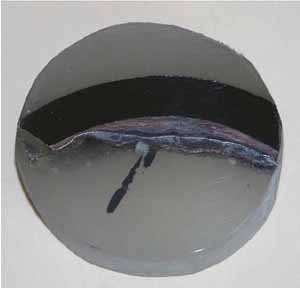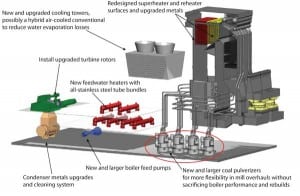COAL POWER Direct
-
Commentary
Cracks in the Ivory Tower
Environmental researchers from Harvard and Tsinghua Universities released a new study, published as the cover story in the September 11 issue of Science, suggesting that China could meet its entire future electricity needs through wind power alone. Studies that focus on a single technology as the silver bullet that solves all of our energy problems often ignore the practical side of their solutions, leaving mistaken impressions in the public mind.
-
O&M
Condenser Tube Life-Cycle Economics
The decision to retube a heat exchanger or condenser begins with understanding why tubes are failing. Only when the “why” is understood can the economic replacement tube material be selected. We explore the most common tube material failure mechanisms and then illustrate how to perform a proper life-cycle analysis for that new set of condenser tubes your plant so desperately needs. In sum, there are many reasons to consider getting the copper out of your condenser.
-
Coal
Court Revives CO2 “Nuisance” Suit Against Utilities
In another major legal victory for states pressing for controls on industry emissions of carbon dioxide, a federal appeals court has reversed a lower court decision and ruled that eight states and the city of New York City could bring “nuisance” suits against five coal-burning utilities to curb greenhouse gas discharges that the states claim are causing damage to their natural resources.
-
Coal
EPA to Clamp Down on Coal Plant Wastewater
The Environmental Protection Agency announced it plans to “revise” existing, decades-old guidelines for water discharges of toxic metals from fossil fuel-fired power plants, saying a recently concluded EPA study focused mostly on wastewater discharges from coal-fired power plants uncovered elevated levels of toxic pollutants.
-
Coal
EPA Finalizes Greenhouse Gas Reporting Rules
In a major climate change rulemaking, the Environmental Protection Agency has issued final regulations that will require most large emitters of greenhouse gases in the U.S. to report their emissions beginning in 2010.
-
Commentary
One Giant Leap
How many times have you heard it said: “If we can put a man on the moon, why can’t we (you fill in the blank)?” On July 20 we commemorated the 40th anniversary of Apollo 11 astronaut Neil Armstrong taking mankind’s first step on the moon and adding this unique point of comparison to our society’s lexicon. The only problem is that the analogy no longer is useful in today’s risk-adverse, technology-driven society.
-
O&M
What if New Source Review Were Repealed?
The New Source Review (NSR) permitting program was originally created as part of the 1977 Clean Air Act Amendments to ensure that new power generation facilities were properly outfitted with all the necessary air quality control systems when constructed. Plants in operation were exempt until they made plant modifications viewed as beyond “routine maintenance,” a term whose definition has been a moving target. Is it time for the NSR to take a back seat to improved plant efficiency and reduced carbon emissions?
-
O&M
Leading-Edge Conveyor Technologies Reduce Dust Emissions
Reducing dust from coal conveyors has moved from a housekeeping chore to a safety challenge, especially with Powder River Basin coals. Here’s what you need to know about the latest coal-handling system design.
-
O&M
High-Hazard Coal Ash Sites, and the TVA Spill Revisited
The EPA has identified 44 "high hazard" coal ash ponds around the U.S., and a recent Tennessee Valley Authority report indicates that the agency should have known its Kingston Plant pond would have been one of them.
-
Coal
Utility Business Customers to Feast on Free Allowances
An analysis by the Center on Budget and Policy Priorities concluded that two-thirds of the value of carbon emission allowances described by the recent H.R. 2545 will benefit utility business customers and households in the top quartile of personal income. The middle quintile will see increased cost for electricity.


